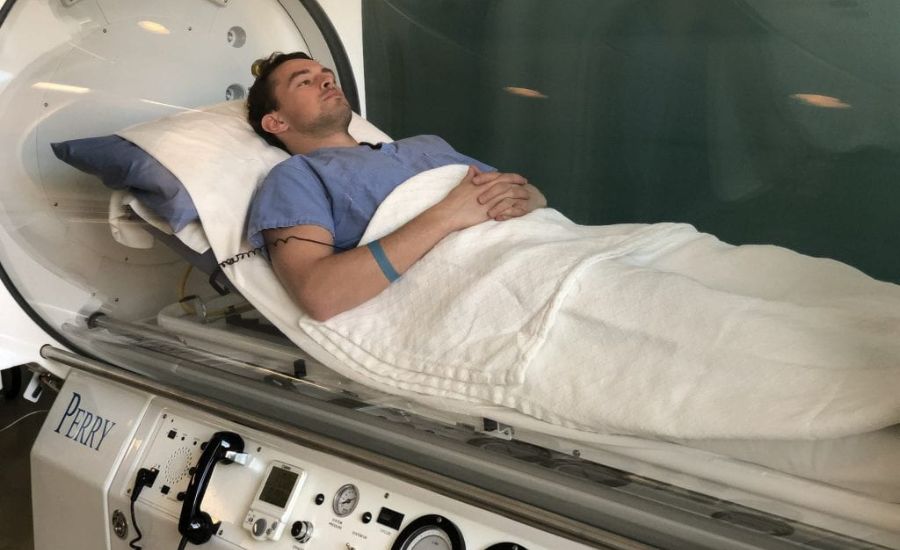Chronic wounds that don’t heal properly can disrupt daily life, leading to discomfort and health risks. Hyperbaric oxygen therapy (HBOT) is one of the treatment options sometimes recommended when wounds resist the body’s natural healing process. While it is not a one-size-fits-all solution, hyperbaric therapy can support recovery by improving oxygen delivery to damaged tissues.
What Are Slow Healing Wounds?
Wounds that do not significantly improve after 30 days may be classified as slow or nonhealing wounds. Common symptoms to watch for include pain that does not lessen, yellow discharge, a foul smell, ongoing redness, swelling, or a prolonged fever. These conditions can occur for many reasons, including poor circulation, infection, or underlying medical conditions. When conventional wound care fails, exploring other supportive treatments like HBOT may offer new avenues for healing.
Several conditions fall under the category of slow-healing wounds:
- Diabetic foot ulcers
- Venous stasis ulcers
- Surgical wounds that don’t close properly
- Ulcers caused by vasculitis
- Boils and abscesses
- Minor burns
What Is Hyperbaric Oxygen Therapy?
Hyperbaric oxygen therapy involves breathing in 100% oxygen within a pressurized environment. This treatment is designed to increase the amount of oxygen delivered to areas of the body where it is needed most. The chamber increases air pressure to two or three times that of the normal atmosphere, helping the lungs supply more oxygen than is possible under standard conditions.
The process of hyperbaric therapy is straightforward and often performed as an outpatient procedure. Monoplace chambers are designed to accommodate one person at a time. The patient lies on a padded bed that slides into a clear, tube-like structure filled with oxygen. In contrast, multi-place chambers are larger and can accommodate multiple patients simultaneously. In these chambers, patients wear masks or head hoods to breathe in pure oxygen. Sessions typically last 90 minutes to two hours, with healthcare professionals monitoring the entire process. Mild side effects, such as temporary ear discomfort caused by changes in pressure, can occur but are rare.
What To Expect During Treatment
Preparation involves replacing regular clothes with hospital-approved gowns. There will also be safety guidelines, such as avoiding skincare products or devices that generate heat in the chamber, to reduce fire risks. Once inside, patients may listen to music or relax quietly.
After each session, a medical evaluation checks there are no lingering issues. A healthcare professional will check your ears, blood pressure, and pulse to confirm everything is within a healthy range. These evaluations identify any potential reactions to the treatment. Once the medical team confirms that you are stable and clear, you can leave the facility and resume your normal daily activities.
How Can Hyperbaric Therapy Help Wounds Heal?
Non-healing wounds often suffer from reduced oxygen supply, which can delay tissue repair. Hyperbaric oxygen therapy aids recovery by delivering oxygen-rich blood to damaged areas. This enriched environment supports processes of healing through:
- Stimulation of healing cells around the wound
- Exposure to high levels of oxygen which is toxic to bacteria in the wound
By creating ideal conditions for tissues to rebuild themselves, HBOT provides additional support as part of a broader wound care strategy, which may include antibiotics, dressings, or surgical intervention. It has been particularly effective in cases like diabetic foot ulcers or surgical wounds failing to respond to standard treatment. It is key to remember that HBOT works best when used alongside other therapies. Healthcare professionals design individualized plans to determine if this approach aligns with each patient’s needs.
Take Steps Toward Effective Wound Healing
Hyperbaric oxygen therapy offers potential benefits for those struggling with nonhealing wounds. Enhancing oxygen delivery to affected tissues supports the body’s natural repair processes and complements other aspects of treatment. If you or a loved one are dealing with a chronic wound, speak to your healthcare team about whether HBOT could play a role in your recovery.
Stay Connected With: celebriches

Jennifer David is the creative force behind CelebRiches, your go-to source for celebrity financial exploits. With an unwavering passion for the entertainment industry, she delivers in-depth insights into celebrities’ net worth, combining thorough research with a captivating narrative. Explore the stars’ fiscal journeys through Jennifer’s expert lens, where finance meets fame most engagingly.

